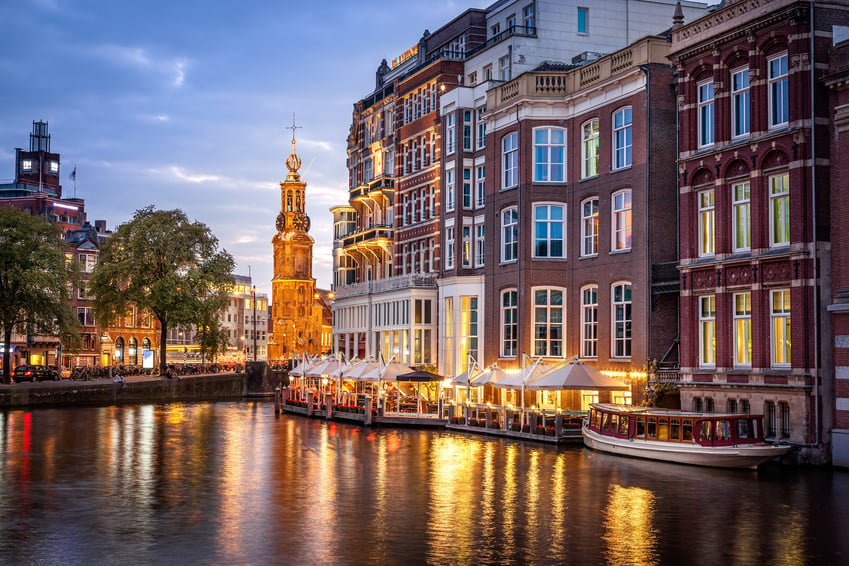On 28 June 2019, the Dutch government presented the new climate agreement (Klimaatakkoord). It contains a set of measures drawn up in consultation with various parties across Dutch society in the joint combat against climate change. The climate agreement aims to reduce CO2 emissions in the Netherlands by setting a national reduction goal of 49% by 2030 compared to 1990.
In the Urgenda lawsuit, the Dutch state was ordered by the district court of The Hague to take further action to reduce CO2 emissions in the Netherlands and to ensure that the emission level in 2020 will at least be 25% lower than in 1990. In October 2018, this decision was confirmed by the court of appeals of The Hague. The Dutch Supreme Court is currently considering the case. The Dutch government previously failed to keep course to reach reduction goals for 2020 in view of the Paris Agreement of December 2015. With this climate agreement, the Dutch government seems committed to achieving its climate goals for 2030. To date, the climate agreement has only been signed by the coalition partners and may be subject to changes.
Below is an overview of the highlights of the Dutch climate agreement per sector.
Industry
- Introduction of CO2 tax for large companies. Large companies that are subject to the EU Emissions Trading System (EU ETS) will be charged with a CO2 tax from 2021 if these companies emit CO2 in excess of the 2030 emission reduction goal. This tax is expected to accumulate from EUR 30 in 2021 to EUR 125-150 in 2030 per tonne of CO2 and includes the mandatory EU ETS tariff (currently at EUR 25 per tonne of CO2). The income from the CO2 tax will be used to finance green company initiatives in the form of subsidies.
- Limitation of carbon capture and storage (CCS) subsidies. CCS is considered to play an important role in reaching the national climate goals in a cost-efficient manner, but not at the expense of the focus on stimulating the development of technologies required for long-term energy transition solutions. CCS subsidies will therefore be reduced to a maximum of 7.2 megatons of CO2 and will be subject to strict requirements.
- Natural gas tax increase and renewable energy surcharge increase for companies. The energy tax for natural gas will go up (4 eurocents per m3 in 2020 and 1 cent per m3 in the following 6 years), the proceeds of which will be used to lower the tax tariff for electricity. In addition, the financing of the SDE+ subsidy scheme, which supports the rollout of CO2-reducing measures, is done via the energy bill: the so-called renewable energy surcharge (Opslag Duurzame Energie). Traditionally, households and companies pay this surcharge on a 50/50 basis. The government will increase the share that companies are contributing to the renewable energy surcharge by 2020 from one-half to two-thirds. Hence, the industry will face higher energy taxes than households.
Electricity
- Shutdown of coal-fired power plants. To accelerate emission reduction and with a view to achieving the goal of 70% of the produced electricity originating from renewable energy sources in 2030 and 100% in 2050, all coal plants in the Netherlands will be closed or converted into biomass plants in due course. The first coal plant to be shut down in 2020 is the plant in Amsterdam located at the Hemweg. A ‘Coal fund’ will be set up to fund social security benefits and (re)train employees working in the coal sector.
- Further stimulation of wind and solar energy. Wind energy in the coastal areas of the Netherlands is still considered the biggest energy source for the Netherlands. New wind farms in the North Sea up to 49 TWh will be established. Electricity production on land will also be increased to at least 35 TWh in 2030.
- Development programme for hydrogen. A substantial hydrogen development programme will be implemented to accommodate large-scale production and storage of renewable electricity with hydrogen technology. The ambition is to install an electrolysis capacity of 3-4 GW in 2030 and to develop a solid hydrogen infrastructure.
Mobility
- CO2-free driving is the future. The climate partners have agreed to aim for zero-emission driving by 2050. Newly produced vehicles should be fully electric from 2030. Next to the stimulation of electric passenger transportation and bio-fuels, the development of hydrogen as a carrier for electric energy will be given a key role in the transition to a sustainable mobility sector, particularly in the heavy transport industry.
- Sustainability goals in logistics. In 2025, zero-emission logistics zones will be established in 30-40 larger municipalities. The shipping and the aviation sectors are working on action plans to achieve a 40% CO2 reduction in the shipping sector and a 35% CO2 reduction in the aviation sector by 2030.
Built environment
- Aim for sustainable and CO2-free buildings. By 2030, the aim is to reach a reduction of 3.4 megatons of CO2. This means that around 1.5 million existing houses should be made more sustainable and the CO2 emission in existing non-residential buildings needs to be reduced by 1 extra megaton. In addition, sufficient renewable heating needs to be made available. Heating networks and other renovations will be implemented and organised per neighbourhood. To facilitate the transition to sustainable and CO2-free buildings, the government will prepare relevant laws and regulations with respect to electricity, gas, heating, mining activities, environmental laws and rental laws. The date envisaged for the entry into force of such legislation is 1 January 2021.
- Heat fund for individuals. To substantially increase the number of sustainable buildings, the government will make available a heat fund (warmtefonds) for private house owners and house owner associations. Until 2030, the government will make available EUR 50 – 80 million per year. Initially, the amount available per house owner will be capped at a maximum of EUR 25,000 per year. House owners will also be able to apply for subsidies: EUR 100 million will be made available per year for, e.g., insulation and heat installations.
- Transition from gas to sustainable heat. Some 1.5 million houses and non-residential buildings should be natural gas-free by 2030, which requires a significant increase of the supply of sustainable heat. The government intends to make 30,000 to 50,000 existing houses natural gas-free per year. By the end of 2021 alone, 75% of the newly built houses should be gas free. On 31 December 2021, each municipality will need to have a policy in place in connection with the heat transition.
Agriculture
- Aim for further CO2 emission reduction in the agriculture sector. The agriculture sector has been given the task of achieving an emission reduction of 3.5 megatons by 2030 in addition to the current policy of 2.5 megatons, thus totalling a 6-megaton reduction in total. For this goal, the Dutch government is investing EUR 330 million for, e.g., the development of innovative and sustainable farming techniques and education.
- Investments in forests and nature. The climate partners acknowledge that trees contribute to CO2 capture and storage. Therefore, they are investing EUR 51 million to prevent deforestation, expand and protect nature conservation areas and stimulate the use of wood, cuttings and other nature products for the construction of land and roads.
For further reading:



